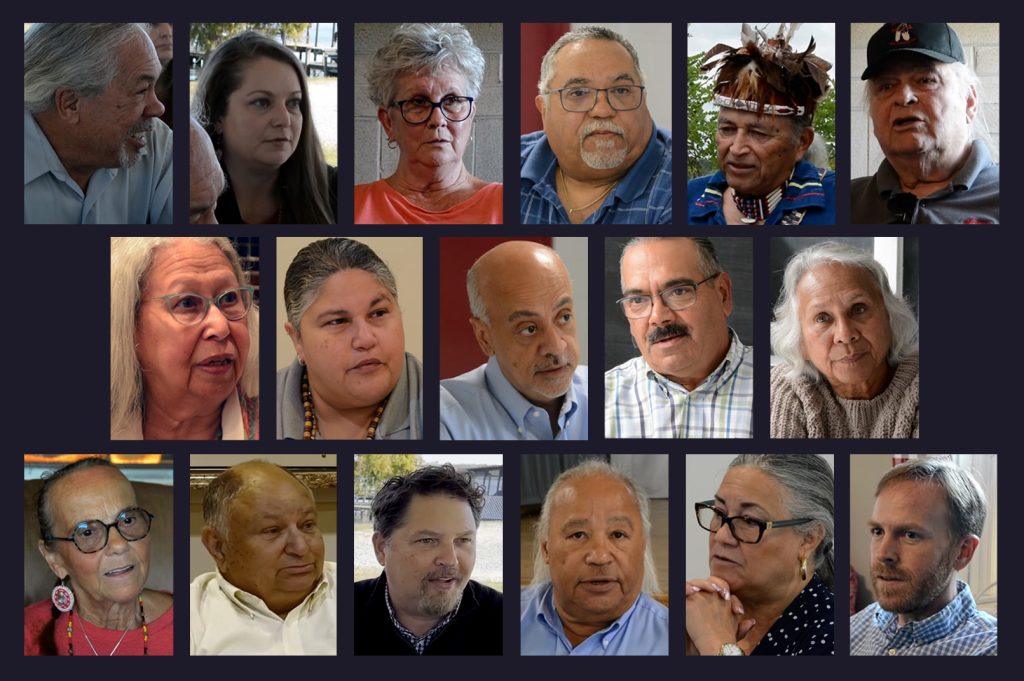
Indigenous Perspectives at the Library of Virginia examines aspects of our collections through the lenses of the eleven federally and state-recognized Virginia tribes. In these interviews, tribal citizens offer reflections on our exhibition themes of retaining tribal culture, identity, resistance, tribal sovereignty, the land and environment, and the future of Virginia’s tribes that enlarge our understanding of documents in the Library’s collections. For more information about our exhibition, on view in our gallery until Aug. 17, 2024, visit the Indigenous Perspectives home page.
Indigenous Perspectives on Retaining Tribal Culture
Virginia’s native peoples retain their individual tribal cultures by revitalizing their languages, practicing traditional arts and engaging in tribal gatherings, which are discussed in these interview excerpts. (14:28 minutes)
Indigenous Perspectives on Identity
Indigenous Virginians maintain their identities as native peoples despite loss of their lands, pressure from their white neighbors and the devastating impact of the 1924 Racial Integrity Act. This set of interview excerpts discusses tribal identity. (18:59 minutes)
Indigenous Perspectives on Resistance
Indigenous Virginians fought against discrimination, hostility and economic pressures by organizing and resisting efforts to steal their land or ignore their identity. These interview excerpts describe such political engagements and ways some tribes have tried to address economic inequality. (8:33 minutes)
Indigenous Perspectives on Tribal Sovereignty
What does sovereignty mean? As sovereign nations, Virginia’s tribes seek a government-to-government relationship with the Commonwealth of Virginia as well as the federal government. These interview excerpts center on sovereignty efforts. (11:41 minutes)
Indigenous Perspectives on Land and Environment
Virginia’s native peoples held land in common for the benefit and sustenance of their communities, but European colonists believed in individual ownership. These conflicting ideas about land use and ownership led to conflict and the loss of ancestral lands. These interview excerpts center on Indigenous land and the environment. (7:15 minutes)
Indigenous Perspectives on the Future of Virginia’s Tribes
Federal recognition of a tribe makes federal funds available for a wide variety of potential projects and opportunities including better health care, housing and education. These interview excerpts focus on the future of Virginia Indian tribes. (9:25 minutes)
John Smith’s Map and the Recovery of Tribal Pasts
In this video, tribal citizens of Virginia’s state recognized tribes reflect on what Captain John Smith’s map means to them. Smith explored the Chesapeake Bay and its adjacent waterways in 1608. He interacted with Indigenous peoples and relied on them for information about the region they knew as Tsenacomoco. The names and locations included on the map have preserved Indigenous knowledge of the land and the people living there.

The Library of Virginia thanks the tribal members who participated in these interviews:
• Chief Walt “Red Hawk” Brown, Cheroenhaka (Nottoway) Indian Tribe of Southampton County, Virginia
• Chief Stephen Adkins, Assistant Chief Wayne Adkins, 2d Assistant Chief Reggie Stewart, Dana Adkins, and Sarah Jefferson, Chickahominy Indian Tribe
• Chief Gerald A. Stewart and Tanya Stewart, Chickahominy Indian Tribe Eastern Division
• Lois Custalow Carter, Mattaponi Indian Tribe
• Chief Lynette Allston, Nottoway Indian Tribe of Virginia
• Chief Robert Gray, Jennifer Dixon, and Kevin Krigsvold, Pamunkey Indian Tribe
• Chief Emeritus Robert Green, Jo Ann Newton Meredith, Jennifer Newton Gallahan, Kathy Harding, Brad Hatch, and Jerry Schenemann, Patawomeck Indian Tribe of Virginia
• Chief Anne Richardson, Rappahannock Indian Tribe, and Ed Ragan, historian
• Chief Frank Adams and Lou Wratchford, Upper Mattaponi Indian Tribe
